The hardest part of learning guitar? Sticking to it.
Why don't we achieve the goals we set out to accomplish? Despite our best intentions, we lose steam when things get too difficult or life gets in the way.
This guitar course works to solve both of those problems by offering small daily tasks that won't overwhelm you.
For busy people, the biggest challenge in learning a new skill is simply not quitting. We quit things when they are too hard and we don't see progress. The idea of this course is that it's "unquittable" - the daily tasks are so small that you'll have no problem doing them. After a month, you'll have the skills, confidence, and momentum to continue.
Kaizen is a practice of continuous improvement that helps you create big change by making tiny advancements over time. For example, if I wanted to start doing abdominal crunches before bed every day, I might start by simply lying on the floor on my back one night. On a subsequent night, I might do one crunch. Over time, I can build a new habit and a new skill by adding something that seems like nothing.
On the one hand, this seems impossibly slow. But slow progress is infinitely better than no progress.
A piece of paper weighs almost nothing by itself, but a ream of 500 sheets is substantial. It all adds up.
Are you ready to learn? Sign up now, or read on for your first lesson.
Lesson One
Pick up the guitar. Hold it so that you look more or less like this:
Your right hand is the one that plucks the strings. You can either use your fingers or a pick. If you use a pick, hold it between your thumb and index finger as though it's an extension of your thumbnail.
The strings have both names and numbers. The first string is the skinniest one, the one closest to the floor. The sixth string is the thickest one. Find the second string. This is B.
Now, pluck the second string with your thumb or a pick. Pluck down over the sound hole.
There are a couple of different ways to do this. First, let your pick (or your finger) come to rest on the first string (the one closest to the floor). This is called rest stroke.
Next, let your finger or pick move in a circular motion downward across the string and back to where you started. This is called free stroke.
Throughout this course, you can use either rest stroke or free stroke or a combination of both.
The second string is B. We just played "open B." It's open because we're not using our left hand at all.
Can you sing a B? See if you can match, with your voice, the pitch you're playing. Sing "mi" (as in "do re mi").
Okay, so that's it! That's Lesson One! Did it leave you wanting more? Was it easy enough for a child to do? That's the whole point.
Believe it or not, you can learn guitar this way - just by doing a tiny bit each day and not quitting. Sure, it's possible to move faster, but more is not necessarily better. More is only better when you're feeling confident and capable.
This first Kaizen Guitar course consists of thirty lessons, doled out over thirty days. Sign up below to enroll!



